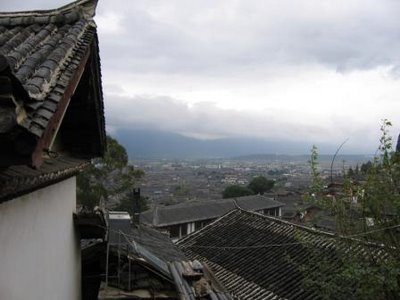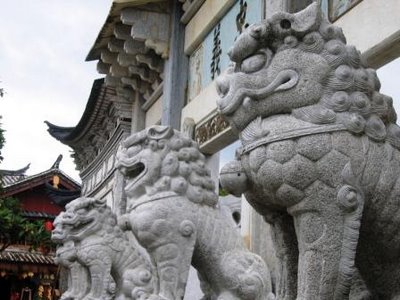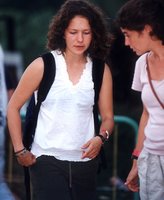
The ladder beside my door leads to the roof which has nice views of the surrounding mountains.

My roof perch also allows me to see into my neighbor's tiny courtyard which is home to a flock of chickens, six pigs, four Mastiff puppies and (usually) three dirty Tibetan children.

I've made some good friends here already and there's an amazing array of people that live here or are passing through. My friend Keith is a journalist and photographer writing a book on Yunnan it's people. Mari works for Australia Volunteers International (Australian equivalent of the Peace Corps), Loja translates Chinese radio into Tibetan, Jason and Amy own a cozy bar across the street and run a Tibetan tour company, Xiaoyun works in the office at ETLI and Anthony, Ann and Megan are all teachers at like me. That's lots of names, but already they are people that matter to me here!
Shangrila is bigger than I expected but the Old Town feels like a small town and everyone says hello. My new favorite spot is on the way to the white chicken monastery that gives great views of the whole town. (I've been spending whole days up there reading Steppenwolf and musing about the Immortals.)


"He has a suspicion of his allotted place in the world, a suspicion of the Immortals, a suspicion that he may meet himself face to face: and he is aware of the existence of that mirror in which he has such bitter need to look and from which he shrinks with such deathly fear."
Hermann Hesse, Steppenwolf









